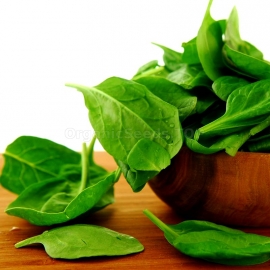


Organic Broad Leaf Sorrel Seeds (Rumex Acetosa)
1.14 €
Broad Leaf Sorrel is a delightful potherb and one of nature’s most special greens, with a tangy taste that can take your taste buds through a range of sensations - limes, lemons, spinach, rhubarb, cabbage and amaranth.
-
Organic Broad Leaf Sorrel (Rumex Acetosa)
Broad Leaf Sorrel is a delightful potherb and one of nature’s most special greens, with a tangy taste that can take your taste buds through a range of sensations - limes, lemons, spinach, rhubarb, cabbage and amaranth.
Sorrel is practically speaking, an ‘herb-vegetable’ or ‘pot-herb’ as it can be cooked like a vegetable, while it has a distinctive lemony flavour like an herb. It can be harvested at baby leaf stage and is a great lettuce substitute in salads and sandwiches as it doesn't go limp. It is most delicious when cooked; the flavour is delightfully acidic. It is a fantastic partner to fish, veal, eggs, and potatoes in soup or gratin.
Sorrel is used fresh and raw in Asian cuisine It is known as rau chua (sour herb) or rau thom (fresh herb) in Vietnamese. In western recipes, it is more often cooked as a green in soup or in cream sauce with fish or chicken, or as a wrap to tenderized meat or fish.
Very easy to grow, producing clumps of pale green leaves with a good lemon flavour, it is greatly appreciated in France, where it is grown in everyone's garden and is easy to find in produce stands.
This hardy perennial pot herb can even withstand freezing winters. Once established, it can be treated as a 'cut and come again' crop. The plant should produce greens for 8 to 10 years.
Sorrel is one of the earliest green crops and embarrassingly easy to grow, once you've got a clump going it needs no attention other than when you want to eat it.
How to Grow
Garden sorrel (Rumex acetosa) and French sorrel are the two cultivated varieties of the herb. Garden sorrel needs damp soils and temperate conditions. French sorrel performs best when it is grown in dry, open areas with inhospitable soils. The plants have very deep and persistent tap roots and grow well with little attention. Planting sorrel from seed or dividing the roots are the two most common ways to propagate the herb. Sorrel will usually bolt when temperatures begin to soar, usually in June or July. When this happens, you can allow the flower to bloom and enjoy it, but this slows the production of leaves. If you want to encourage larger and more leaf production, cut the flower stalk off and the plant will give you a few more harvests. You can even cut the plant to the ground and it will produce a full new crop of foliage.
Harvesting
Sorrel can be used from late spring until fall, with management. Harvest only what you need from the plant. It is much like lettuce and greens, where you can cut the outer leaves and the plant will continue to produce foliage. You can begin to harvest when the plants are 4 to 6 inches tall. The smallest leaves are best in salads and add an acidic tang. The larger leaves are more mellow. The herb is a traditional accompaniment to eggs and melts into creamy soups and sauces.
